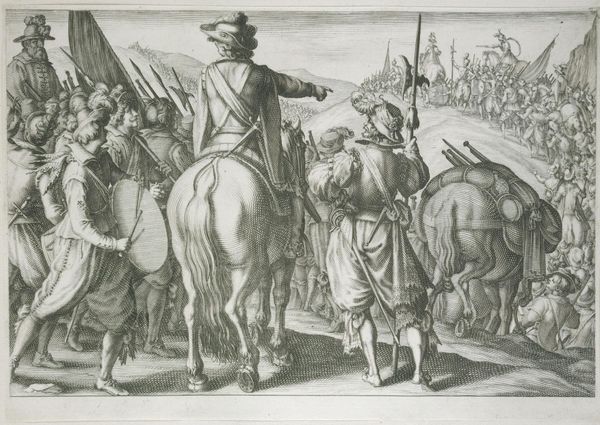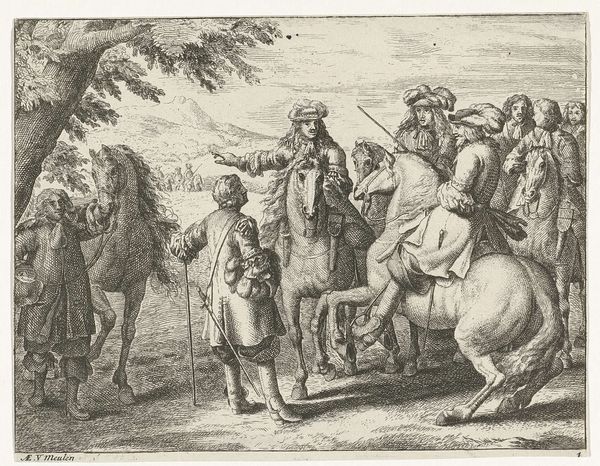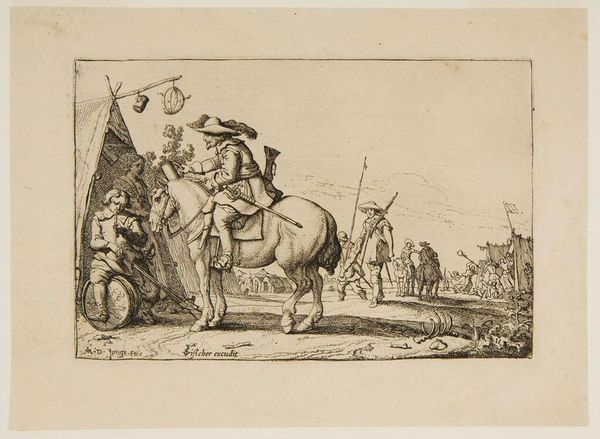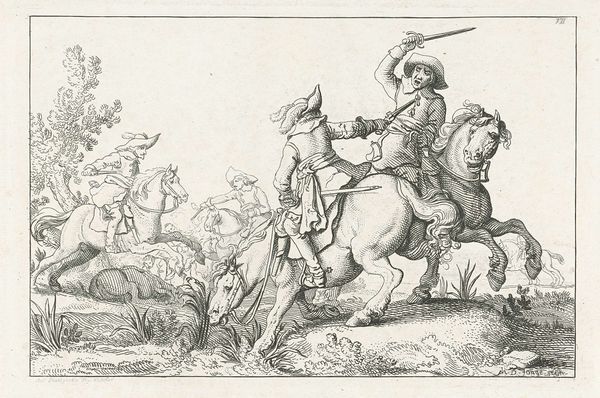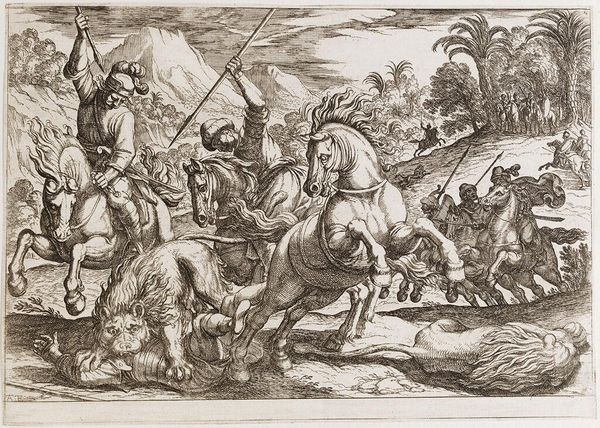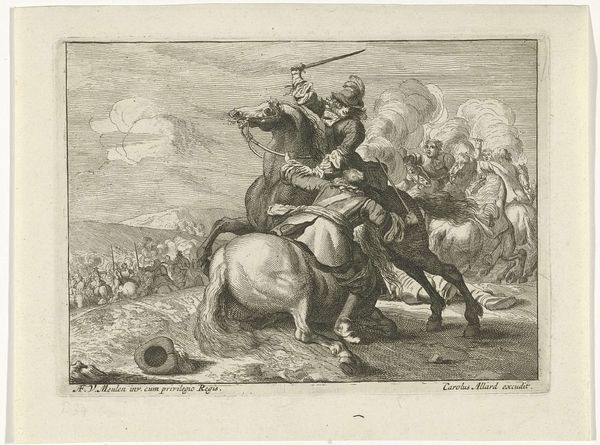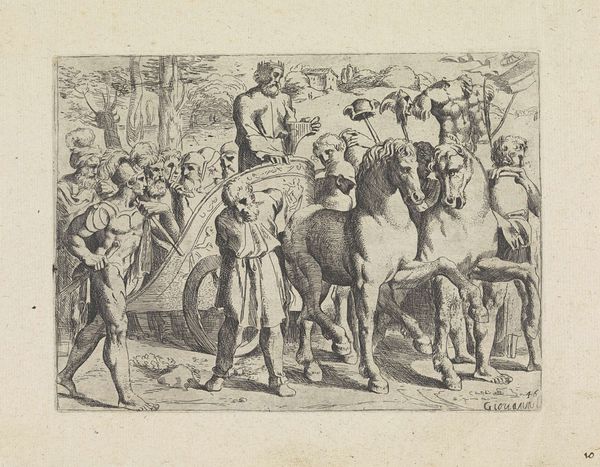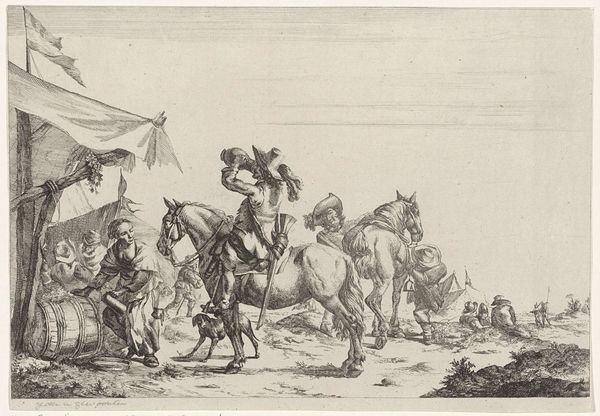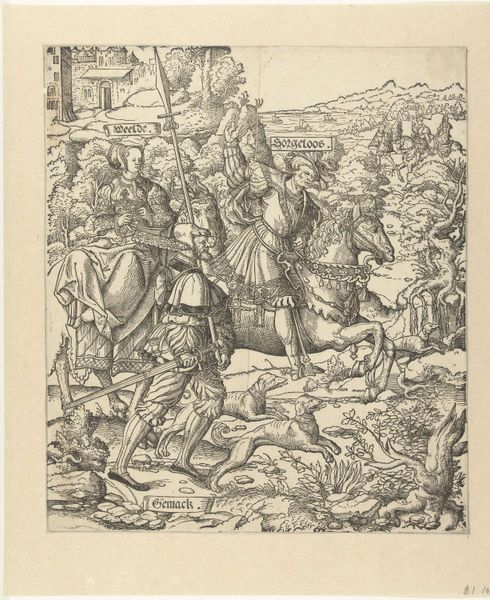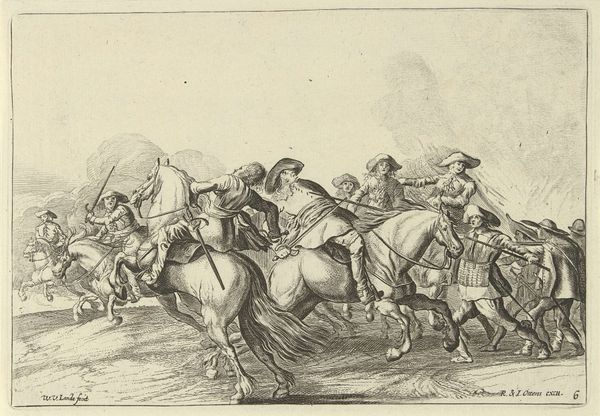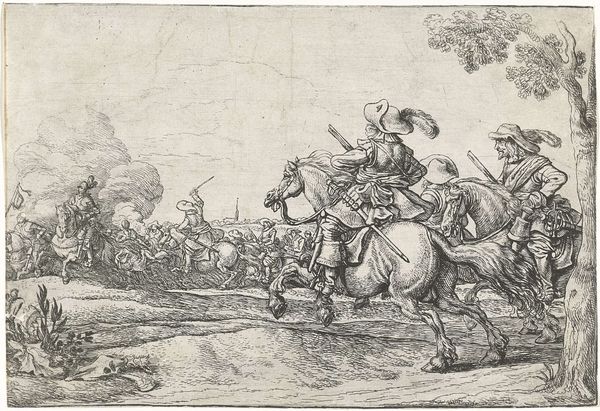
Departure of the Troops of Ferdinand de' Medici against the Turks c. 17th century
0:00
0:00
Copyright: CC0 1.0
Curator: This etching by Jacques Callot, made around the 17th century, is titled "Departure of the Troops of Ferdinand de' Medici against the Turks" and currently resides in the Harvard Art Museums. Editor: It immediately strikes me as a scene of immense scale rendered with impressive detail. The mood seems charged, a mix of anticipation and solemnity. Curator: Callot was a master of etching, and his skill is evident in the precise lines and the way he creates depth and texture. Consider the socio-political context: Florence under Medici rule, engaging in military campaigns. This piece acts as a document of its time. Editor: Look at the figure of Ferdinand, directing his troops, a clear symbol of power and authority. The horses, the banners, even the weaponry—they all contribute to the visual language of war and conquest that prevailed at the time. Curator: Indeed, the materials used, the copper plate and etching tools, allowed for multiple reproductions, spreading the Medici's message of strength and projecting an image of Florentine military might. Editor: And it carries the weight of history, reminding us of the long, often brutal, conflicts between different cultures and empires. It's a potent image. Curator: Reflecting on this work highlights the intersection of artistic skill, material culture, and socio-political messaging in 17th-century Europe. Editor: I leave seeing how symbols of power persist and continue to resonate through history.
Comments
No comments
Be the first to comment and join the conversation on the ultimate creative platform.

